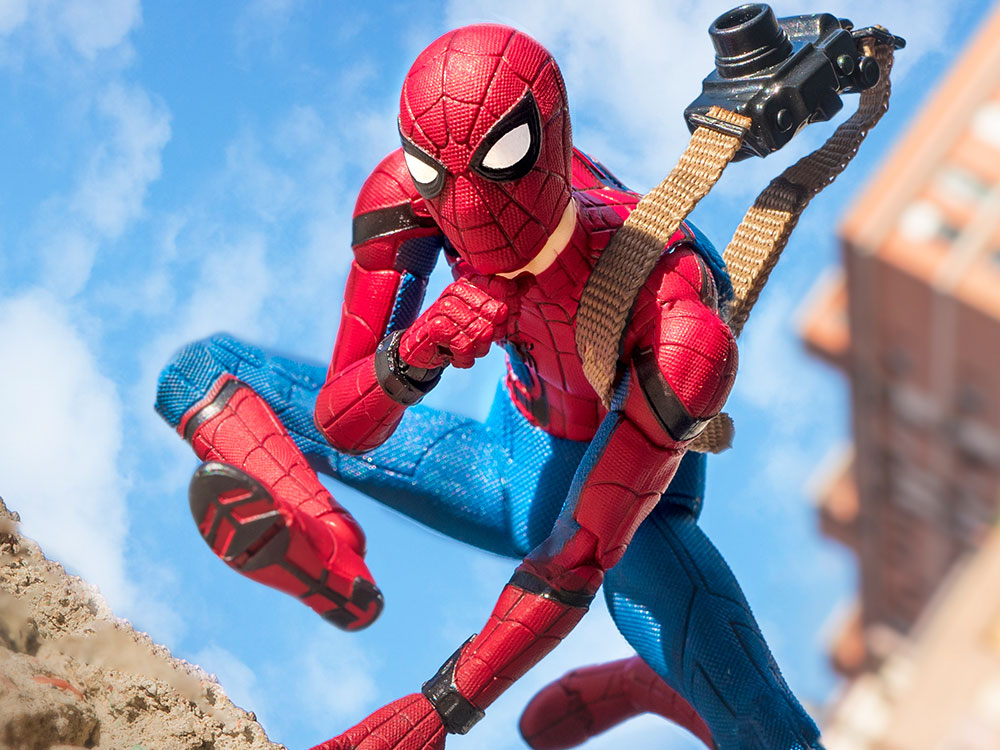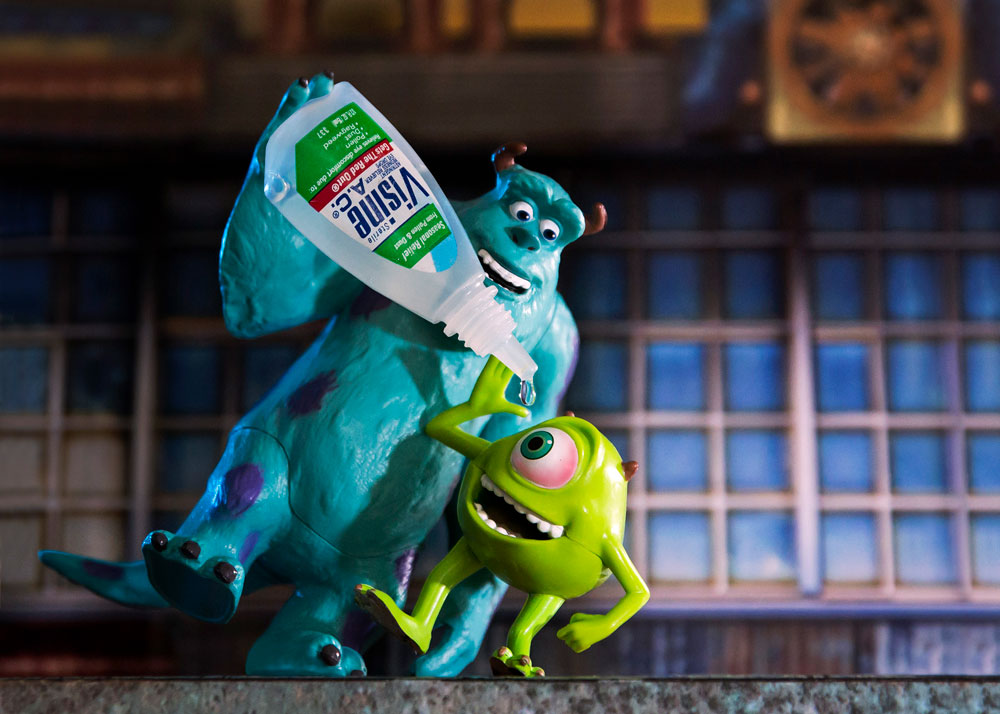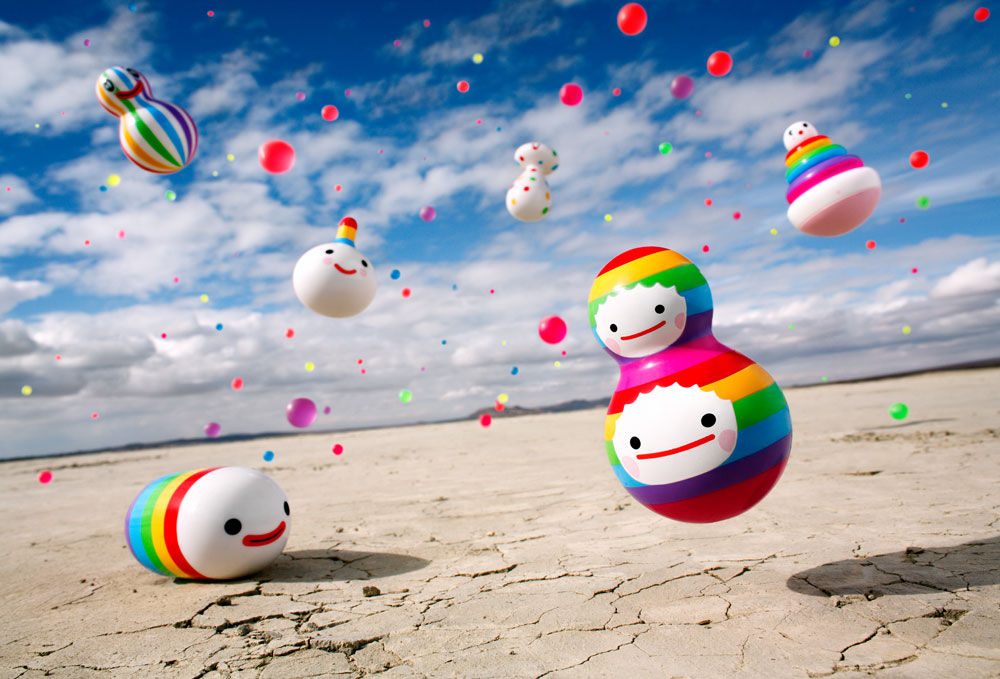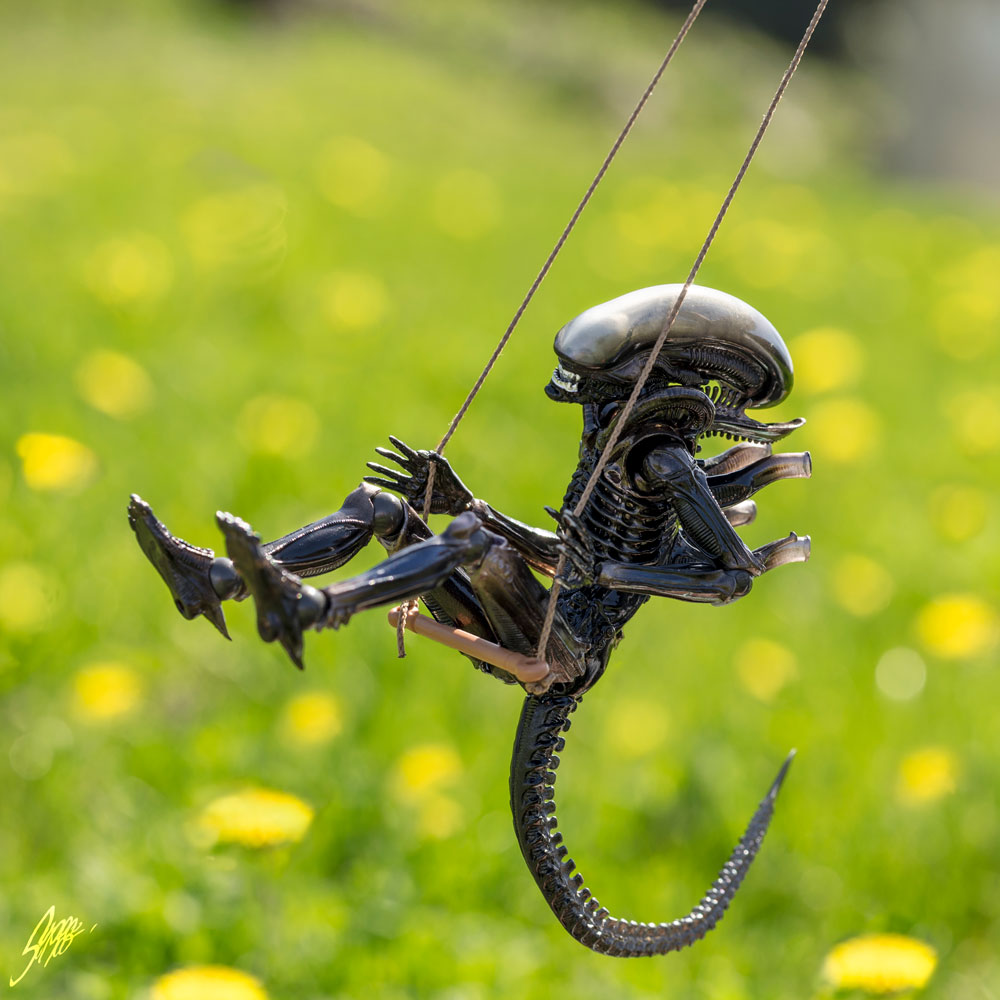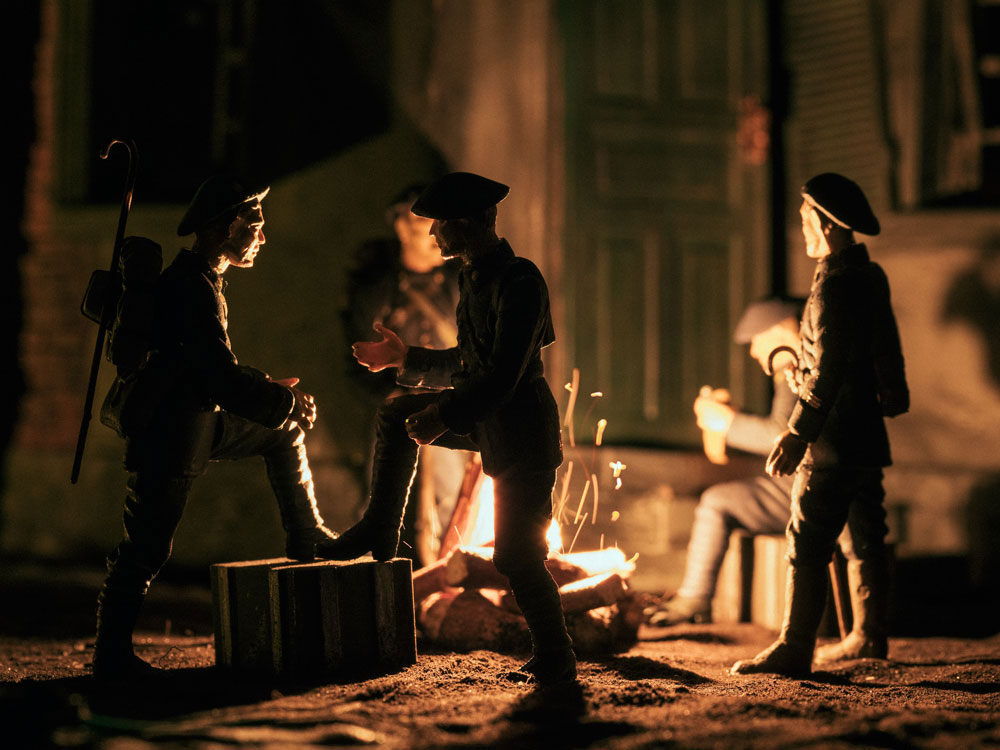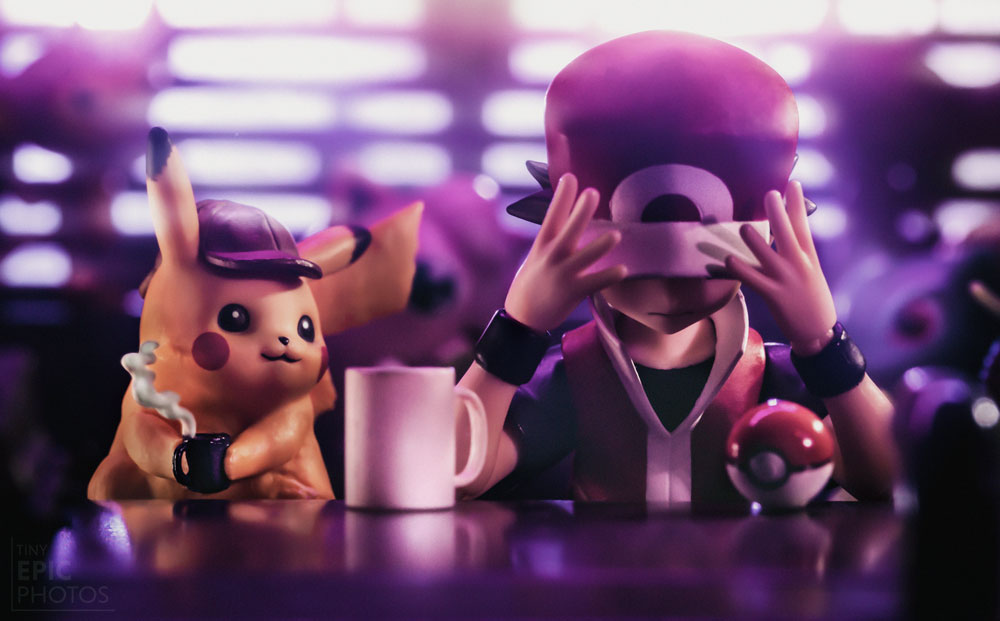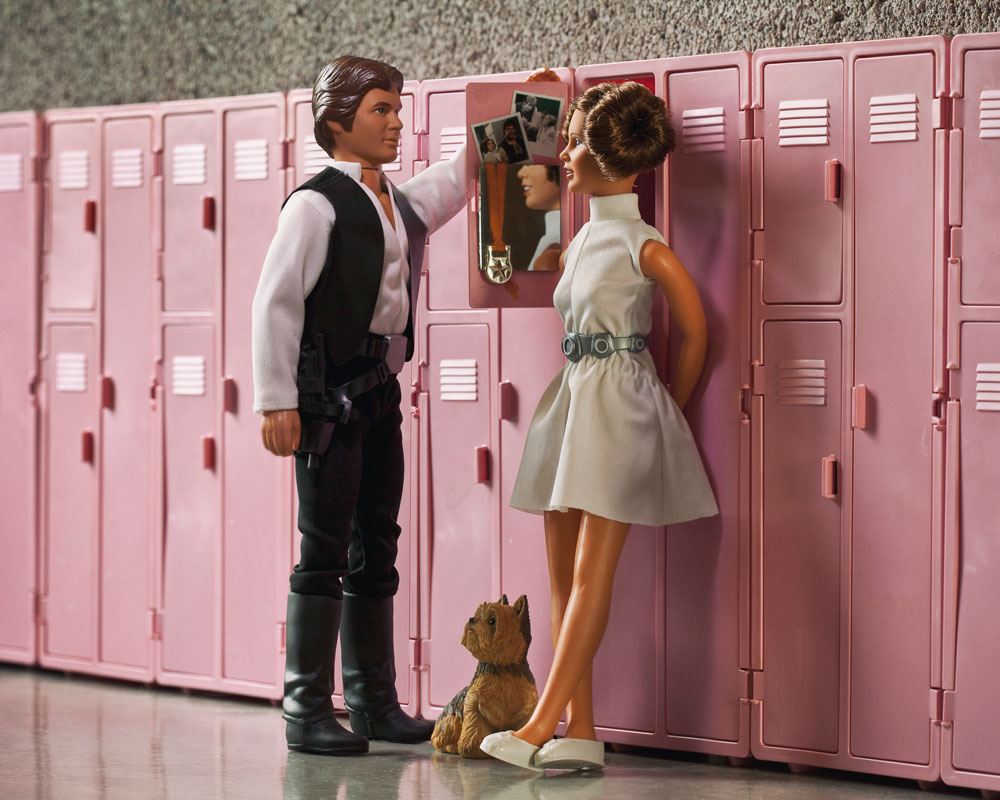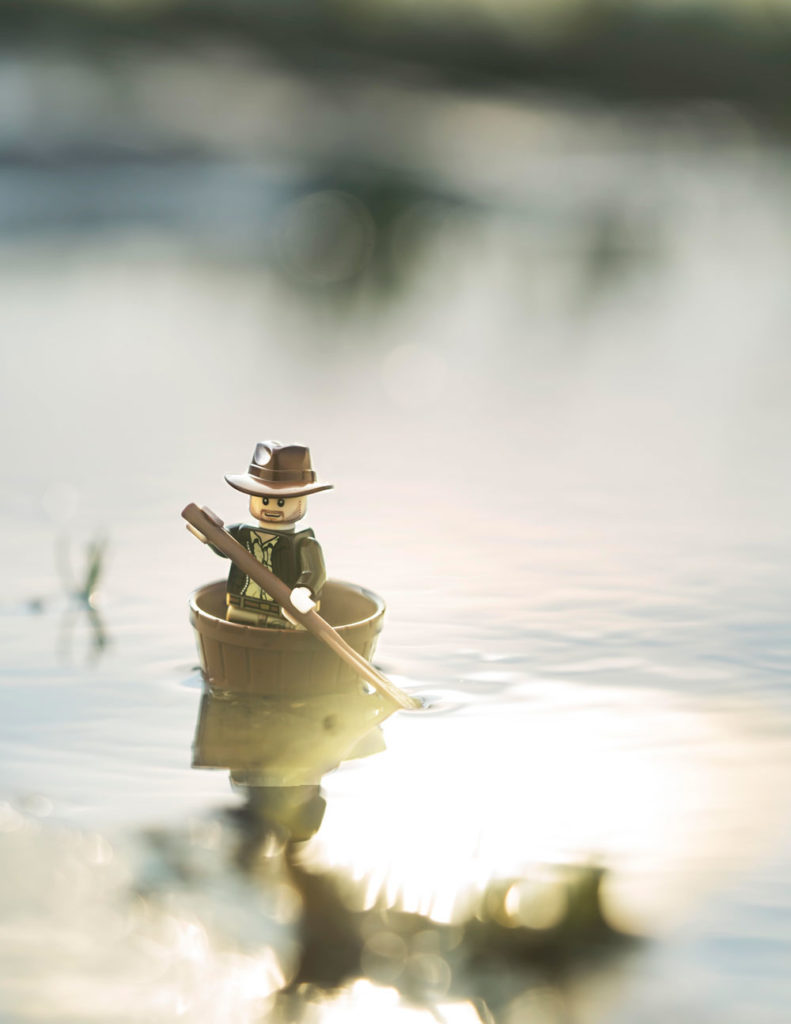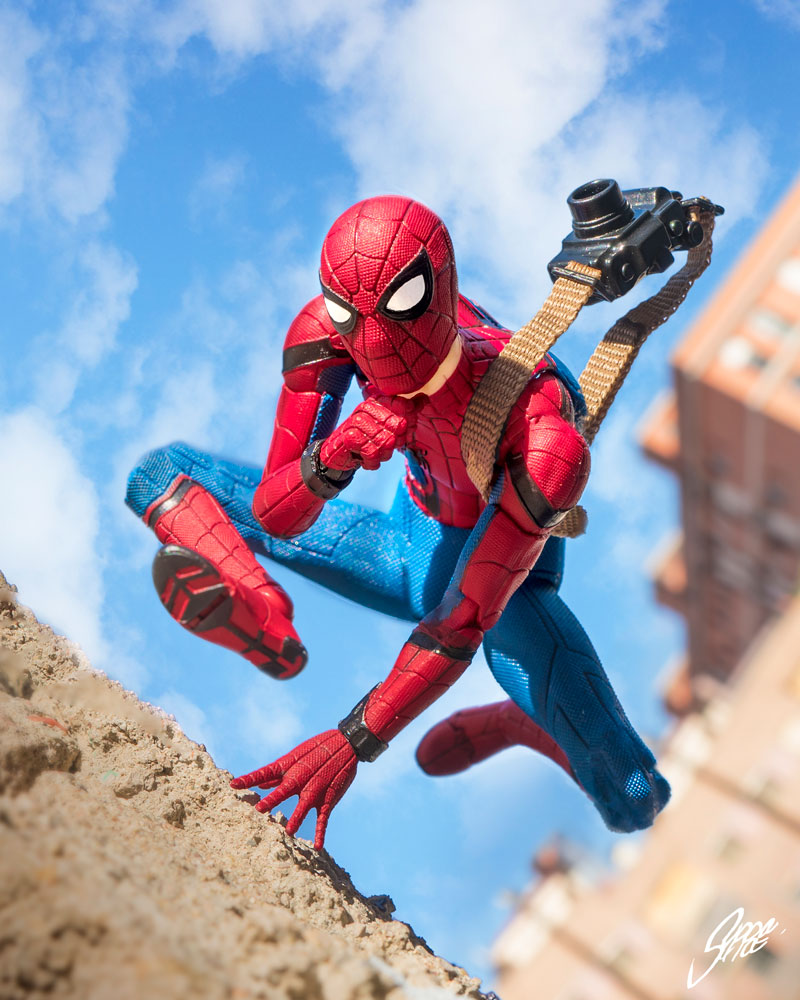
Taking creative photos of toys and action figures certainly isn’t a new idea: Pierre-Jacques Ober remembers creating his first toy photography story back in the ‘80s without even realizing it. Armed with a Polaroid camera and a Spider-Man action figure on his travels to a small island in Brittany, France, he took 25 photos of the web-slinging hero on what he calls a Famous Five-style adventure. The series ended when Ober ran out of film, but his toy photography story was just getting started.
The toy photography community is made up of countless toy enthusiasts, each with a story like Ober’s that pinpoints the exact moment they fell into this artform — usually by accident. While the hobby has existed for decades, it has grown significantly in recent years as social media platforms, such as Instagram, give photographers an easy way to share their work and find each other. As Danny Neumann, a toy photographer who primarily works in narrative photo series, puts it: Instagram provides a steady audience.
“Because I usually post a new series one shot per day, it’s nice to know it will likely show up on a follower’s feed in a consistent way,” he says. “And because Instagram has liking and commenting features, I get to interact with friends and fans in an immediate and personal way.”
The prevalence of toy photography on Instagram is certainly quantifiable. The hashtag #toyphotography had passed 7 million search results at the time of publication, with newly tagged photos popping up literally every time you refresh the page.
Not all toy photos reach the same caliber, but these millions of photos are a far cry from product shots on a white background. When done well, toy photography makes inanimate objects feel alive and tells a compelling story. For many toy photographers, including Mitchel Wu (who took The Child photo on the cover of our winter issue), the storytelling component is the most important.
“My goal is to create an image that immediately captures an audience’s imagination, engages them on an emotional level with the story or message I’m communicating, and compels them to want to learn more about the toys,” he says. “Storytelling is ultimately what will make an image impactful and memorable. Without a compelling story, the image, and product, is quickly forgotten.”
Brian McCarty, who has been a toy photographer for nearly 30 years, also emphasizes the importance of emotional substance and story, over visually interesting gimmicks.
“I want more emotional content, I want more personal vision, and I want to see folks who aren’t just preaching to the choir or telling everyone what they want to see about a certain property they already know about,” he says. “There may be a guy or girl whose thing is exploding stuff or certain light effects, … and they’re great, but I still miss that artistic vision and the purpose beyond ‘I made a cool photo.’”
Neumann describes successful toy photography as blurring the lines between reality and fiction. “In other words,” he says, “can an action figure photo be so well composed, lit, and shot so as to force viewers to do a double-take before realizing the subjects are toys and just a few inches tall? That’s a fun exercise for me. I see it as an effort to re-achieve that elusive, childlike mindset that gets completely absorbed in the imaginative play space. I think, as adults, we lose the ability to get lost like that.”
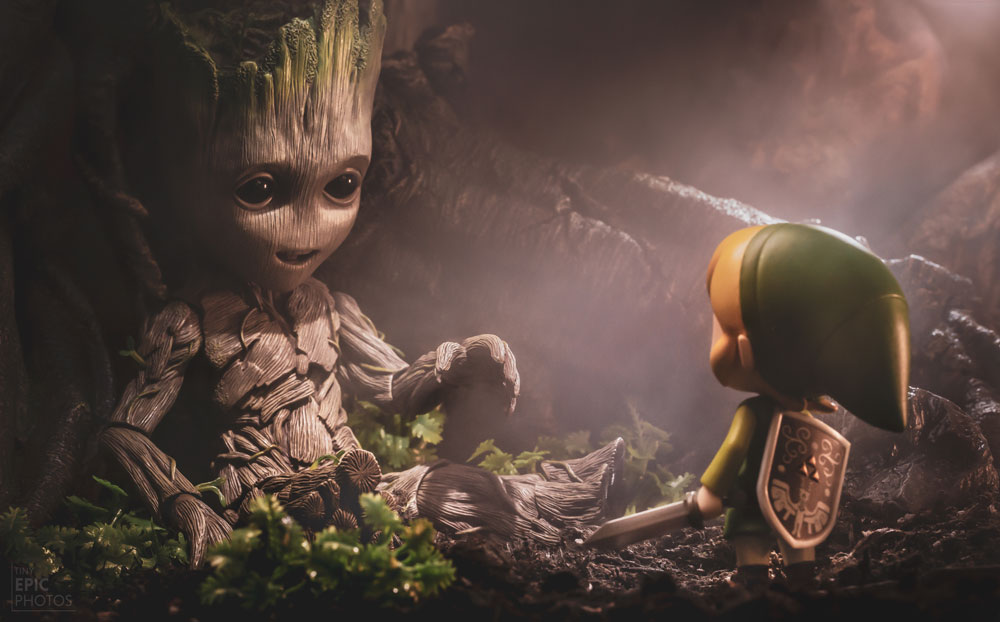
The Tough Stuff
That imaginative, childlike mindset that Neumann describes seems to be at the core of nearly every toy photographer’s passion. Toys and action figures tend to evoke positive nostalgic experiences, so many toy photographers say they hope to make people smile with their work.
Yet some toy photographers successfully juxtapose the levity of play in their work, using toys as a medium to process and discuss difficult topics.
Photographer Dan Leonard created With Toys in Mind, a mental health awareness project comprised of an Instagram account and an anthology, to encourage toy photographers to use their work to break the stigma around mental health struggles.
“I think it’s a medium that has worked for me and has definitely worked for others, so that I can express what I might be going through, …” he says. “It allows a certain disconnect from the self that I find helps make discussing issues easier. I can channel my thoughts or feelings into an idea or a figure, and it becomes easier to process. It often gives depth to a photo that wouldn’t necessarily be there, and it can create an image that is relatable.”
Leonard says taking these photos can serve as a means of release. He started With Toys in Mind about five months after he started doing toy photography. He noticed that the hobby helps keep his anxiety and depression at bay, and he wanted to express that with his work. He began using the hashtag #WithToysInMind as a way to get the community involved.
“It quickly became apparent that I wasn’t the only person who was using toy photography to help get through the struggles of life,” Leonard says. “It quickly began to gain traction and grew into a community within itself where people felt safe discussing and supporting each other through various issues.”
McCarty also utilizes the therapeutic aspects of toy photography in his project-turned-nonprofit, War Toys, which he started in 1996 while doing an exhibition in Croatia. He began thinking about war toys, such as G.I. Joe and plastic army men, as a way people who had never experienced war could connect to those who have.
From there, McCarty began working with children from Israel, Lebanon, Syria, and Iraq. These children effectively become his art directors — they draw and describe their experiences of living through war, and McCarty recreates the scenes using toys. In this way, McCarty amplifies their voices and helps share their experiences with the world.
“It is sort of channeling that emotional content — that narrative aspect, the reflecting, refracting, whatever it is — of the real world into smaller, safer bites acted out by the toys,” he says.
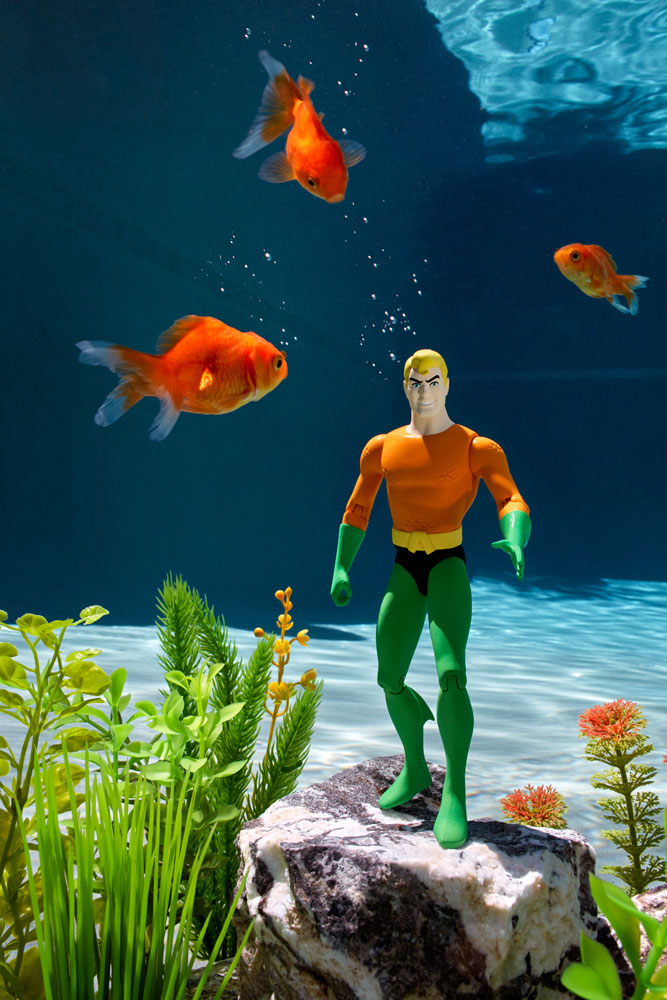
Business Minded
In addition to providing entertainment and a bit of therapy, toy photography has started moving into toy marketing and sales. Some companies, including LEGO, Hasbro, and Beast Kingdom, use or promote toy photographers’ work — to varying degrees — with their social media posts, advertising, or convention signage.
Shelly Corbett, who primarily photographs LEGO mini-figures and works for toyphotographers.com, says, “With the advent of social media, there is a lot of pressure to create interesting content. I think it’s natural for toy companies to look to the toy community of professional amateurs to fill in the gaps or give their toys a fresh look.”
Corbett says that a significant majority of toy photographers only utilize it as a fun hobby. However, Wu and McCarty are among those who use their photos to make a living.
Wu says that, in his experience, more companies are starting to embrace toy photography as an artform — and toy photographers as an influential community — that can drive sales. He notes that there is more discipline required for professional toy photographers who must stick to timelines and budgets that companies set.
“As a professional, you don’t have the luxury of being able to wait to be inspired to create,” he says, “and you certainly don’t have the luxury of being able to create images around only your favorite characters and properties.”
For people interested in paid work, Wu suggests maintaining a website and an active presence on social media. “If you’re a toy photographer thinking companies and agencies aren’t looking at your work and interactions on Instagram, you’re mistaken,” he says. “This is why it’s important to understand that the material, energy, and personality you put out into the world on Instagram creates a kind of brand for you, and that brand can affect the opportunities that may or may not come your way.”
Wu and McCarty both caution against giving companies toy photography for free — or in exchange for toys — which is becoming more common in the community.
“Eventually, people really need to learn the business way more,” McCarty says. “They need to learn about copyright, they need to learn about business practices, and they need to stop giving away their work. I’ve seen it way too much. … They’re passionate and they’re excited, and I appreciate that, but — I hate to say it — there are some companies and entities that will take advantage of that if folks aren’t educated.”
Wu adds, “I know that for many, getting free toys from their favorite toy companies that they worship is like a dream come true. But once you go down that road and build that reputation, it’s very hard to go back.”
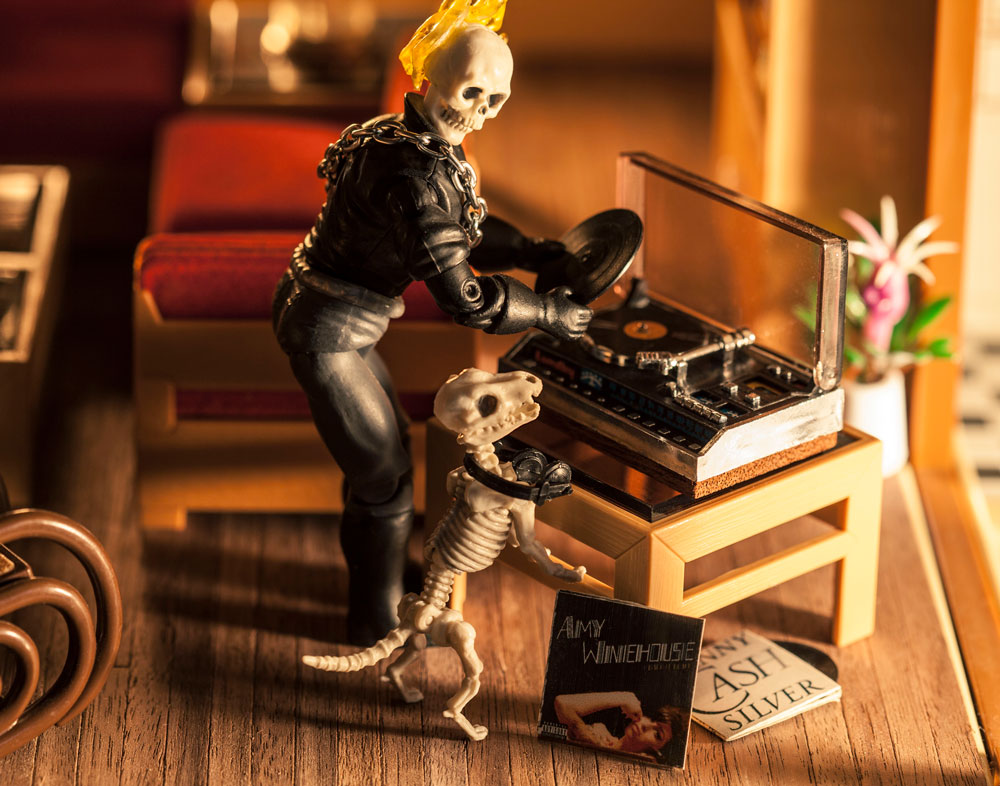
We’re all friends here
There are very few threads that tie every toy photographer together because the community includes such a wide breadth of styles, interests, focuses, and ideas.
The one thing every photographer seems to agree on, though, is the value of the community itself. In a setting that could easily be cutthroat or competitive, these creatives find support, guidance, and friendship.
Ober and his wife, Jules, now create children’s books called Little Soldier Stories, which also tackle the difficult subject of life at war and are entirely illustrated with toy photography. Ober credits the Instagram toy photography community for the project’s success.“The appreciation and support of our followers, mostly toy photographers themselves, gave us a lot of confidence,” he says. “Before that, we had in the back of our minds that we might be doing something a bit too ‘out there.’ Discovering that we were not the only ones was liberating for us.”
More experienced photographers are also willing to help newcomers, Corbett says, either with specific advice or by sharing a behind-the-scenes look at how they produce their photos.
“We are always inspiring each other and pushing to create original work with our toys,” she says. “The community is a lot of fun, and many an online friendship has morphed into a real-world one.”
Neumann, who primarily interacts with other toy photographers on Instagram, calls the community an informal arts collective, where photographers inspire each other with their work.
“I think the lack of a negative, competitive vibe is due, in large part, to the fact that we are all doing it for love of the hobby,” he says. “We’re all just kids who have found a grown-up way of playing with our toys.”
Get the Picture
Veteran toy photographers share their advice for newbies.
Mitchel Wu, @mitchelwuphotography
“The biggest mistake I see beginners make is trying to do too much too soon. … Don’t try to get too crazy with the special effects or techniques because that comes with time and practice. I would much rather see an image with a great story. Make me laugh, make me think, make me feel something.”
Brian McCarty, @brianmccarty
“I think the biggest mistake initially is thinking you have to have XYZ piece of equipment — and I don’t care what type of photography someone is interested in, especially in this day and age with just about everyone having phones. … Just do the absolute best you can with what you have available, whatever resources those are, and once you have exhausted that, then start thinking about begging, borrowing, or buying whatever it is that you might want to move forward.”
David Cubero, @suppaduppa666
“Work, work, and work. Always carry your camera and some figures — you never know when a good picture will pop out from your mind. And don’t be obsessed with likes and shares. If your work is good and honest, sooner or later it will draw the attention of the community. Ah, I almost forgot, don’t be afraid of Photoshop: With a little practice, your pictures will improve so much!”
Pierre-Jacques Ober, @littlesoldierstories
“First and foremost, have fun. Don’t get obsessed with technique, and … let your imagination run free. It is all about pleasure and dreaming. And satisfaction comes from the process of trials and errors, of discovery, of surprises, and of disappointments.
It is a practice.”
Dan Leonard, @tinyepicphotos
“Start small, practice, and experiment as much as they can. Don’t be afraid to make mistakes and build up a collection/equipment as they go along and find a need for it. The biggest resource available is the community. Never be afraid to ask questions, look at how people are doing things, and work techniques into your own style.”
Danny Neumann, @cantinadanny
“Don’t let a desire for ‘likes’ or exposure dictate your content or motivation. Do it for the love of the toys. Do it because it’s bringing YOU creative satisfaction. … What to avoid would be bankrupting yourself in pursuit of accessorizing the perfect shot!”
Shelly Corbett, @shellycorbettphotography
“Toy envy is real. Whenever you see a cool toy displayed in a clever photo, it’s hard not to want to buy the toy and create something similar. I would recommend choosing a toy line or theme and attempting to limit your collection.”
This article was originally published in the Pop Insider’s Winter 2020 Issue No. 6, click here to read more!

